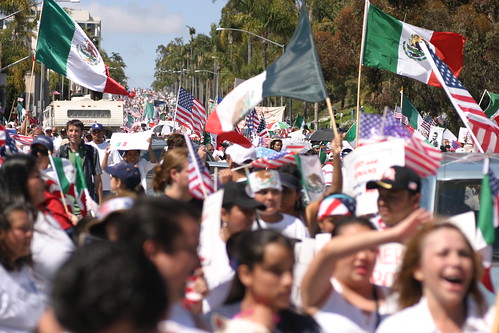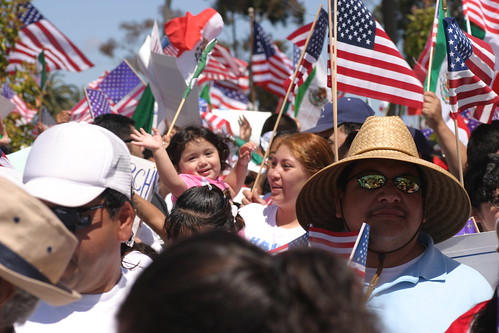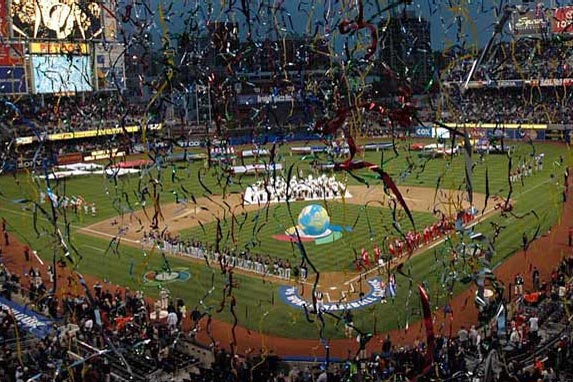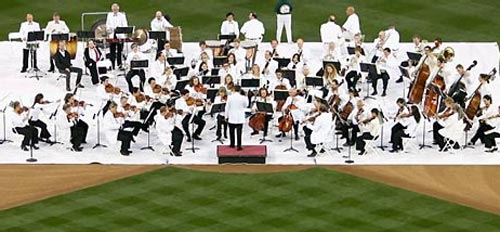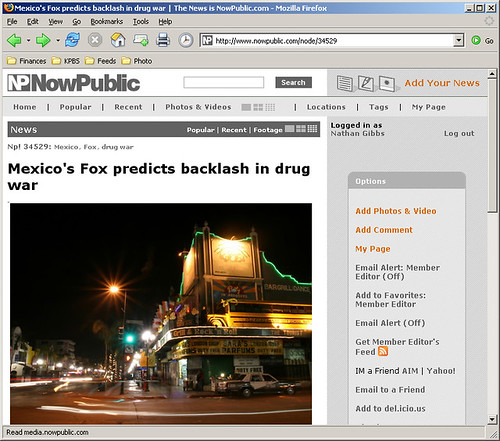
I got an email from Calder Lorenz, Director of Contributor Relations at NowPublic.com asking me for permission to attach this photo (from Flickr) to a story about Mexico extraditing drug lords to the U.S. I’m glad he at least asked and let me know he wanted to use (or share) it.
The image is (sort of) protected by a Creative Commons Attribution – NonCommercial – ShareAlike License. I’m a believer in sharing ideas. At this point in time, I am not overly concerned with making money on my creative work. That Creative Commons license is basically an “open source” license for media. If someone decides to use my photo/video to make money, they’ll have to negotiate with me before being legally free to use it. If it serves a non-profit or educational purpose, feel free use it or twist it into something new. Just let me know about it. If my work becomes so massively distributed and culturally important that I could actually make money on it, I suppose I might renegotiate with my conscience.
This is the first time I noticed NowPublic.com and I’m not sure yet what I think of it. Will it be a citizen journalism media frenzy? Or get clogged up with people ranking hot chicks as news?
“We are not just a digg, where we are focused on the editorial stuff, or a Flickr, where we are focused on photography, or YouTube, where it is just video, or Blogger, for that matter, where it is just written stuff. We are pretty much everything…. We organize all of the information around these news events and people can collaborate and report on news stories from whereever they are with whatever device they are using.” Michael Tippett, CEO Founder of NowPublic.com [source]
At a conference for public broadcasting in February, a panelist asked this question: Which is more real, 200 cellphone pictures of an event or a 30 second story by a reporter? The question draws attention to the bias any individual has in telling a story. Hundreds of people telling the same story adds credibility. So giving people a platform should be a great idea… but I’m still a little sceptical of the process. I still think there is a cultural divide of people who are consciencious and those who just don’t care. At the moment, NowPublic’s top stories are about burlesque, sex symbols, fashion, and tattoos. Go figure.
Related Articles:
